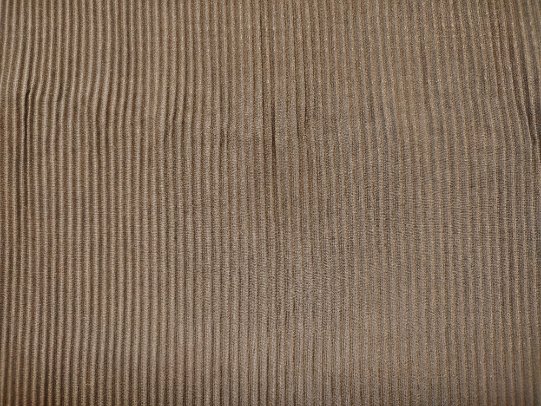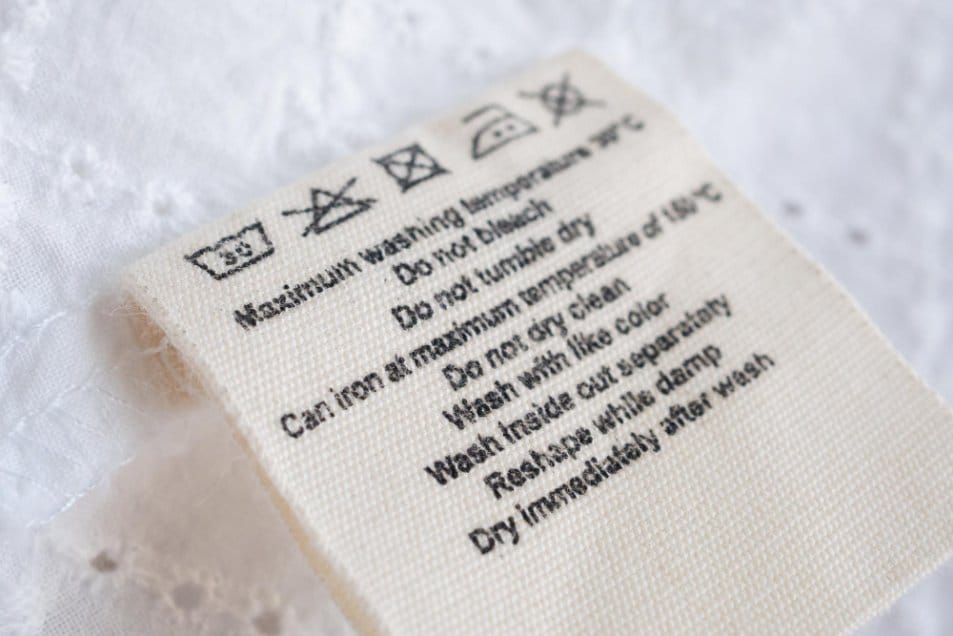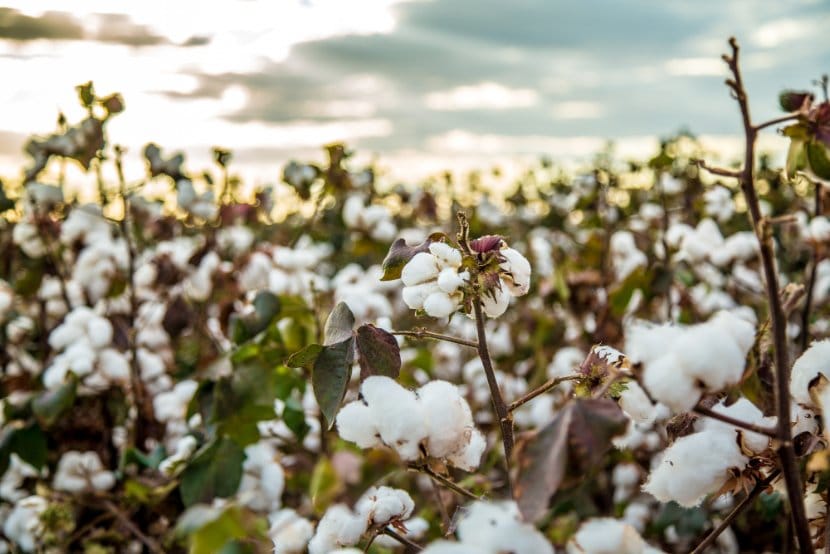From ancient Egyptian origins to modern sustainable fashion – everything you need to know about corduroy cotton’s properties, care, and style
Table of Contents
- What Is Corduroy Cotton?
- Why Corduroy Is Dominating 2025 Fashion
- History and Evolution
- Understanding 100% Cotton Quality
- Benefits and Unique Properties
- Technical Specifications & Wales Guide
- Fashion Applications & Styling
- Home Decor Applications
- Complete Care Guide
- Smart Shopping Guide
- Frequently Asked Questions
What Is Corduroy Cotton?
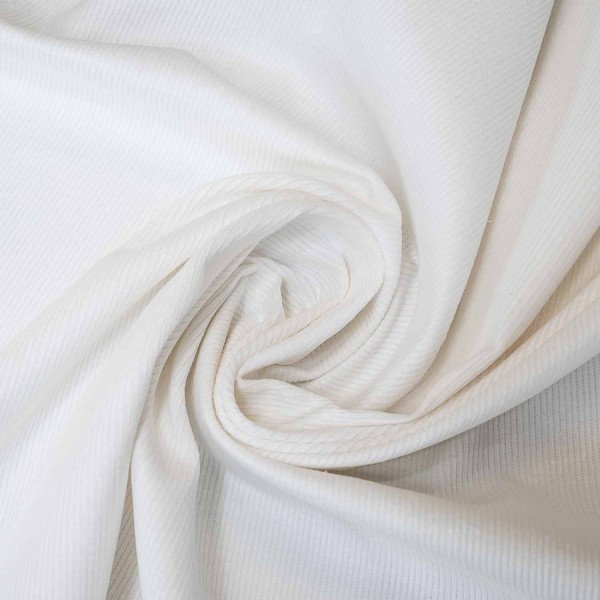
Corduroy cotton is a distinctive textile featuring raised parallel ridges called “wales” that create its signature ribbed surface. Made primarily from 100% cotton fibers, this durable fabric combines the breathability and comfort of natural cotton with a unique textured appearance that catches light beautifully.
Key Definition: The ridged texture results from specialized weaving techniques where extra yarn is woven into the base fabric and then cut to create the characteristic wales. Each ridge acts like a reinforcement beam, adding both visual interest and structural strength.
Unlike smooth cotton fabrics, corduroy’s three-dimensional surface creates depth and warmth. The vertical wales trap air, providing natural insulation while maintaining the moisture-wicking properties that make cotton fabric so popular for both clothing and home furnishings.
2025 Trend Alert: The Corduroy Renaissance
Corduroy is experiencing its biggest revival since the 1970s. Market projections show the global corduroy fabric market reaching $3.7-4.2 billion by 2032, driven by sustainability trends, vintage aesthetics, and comfort-focused design.
Why Corduroy Is Dominating 2025 Fashion
The corduroy comeback isn’t just about nostalgia. Several key factors are driving its 2025 renaissance:
Comfort Revolution
Post-pandemic fashion prioritizes comfort and sensory experiences. Corduroy’s soft, tactile surface perfectly captures the “hygge” aesthetic that defines modern home and fashion trends.
Sustainability Focus
As consumers seek eco-friendly materials, 100% cotton corduroy appeals to environmentally conscious shoppers. Its durability means garments last decades, not seasons.
Retro Aesthetics
The Wes Anderson-inspired design movement and 1970s revival have brought corduroy back to the forefront. Think curved furniture, earthy tones, and textural contrast.
Versatile Applications
Modern corduroy works equally well for oversized blazers, home upholstery, and statement accessories. It bridges casual and formal wear effortlessly.
Expert Insights: Industry Leaders Speak
“I’m fully obsessed with men leaning into unexpected textures — velvet, corduroy, even crushed satin. It’s giving tactile confidence, and I love to see it.” – Fashion Expert, Comfort Brand
“Corduroy’s evolution goes beyond aesthetics. Today’s innovations make it possible to create corduroy with previously unachievable properties, such as extreme lightness, controlled elasticity, and advanced technical performance.” – Biancalani Textile Innovation
Color trends for 2025 favor sophisticated deep tones: French blue, burgundy, forest green, and rich browns. These hues complement corduroy’s texture while offering flexibility across seasons and styling approaches.
2025 Seasonal Corduroy Search Trends
Spring
22
Search Volume
Lightweight needlecord
Summer
14
Search Volume
Fine-wale varieties
Fall
55
Search Volume
Jackets & outerwear
Winter
81
Search Volume
Wide-wale pants
Peak shopping seasons: October-December (Holiday season)
History and Evolution of Corduroy Fabric
Corduroy’s journey spans over 1,800 years, evolving from ancient Egyptian workwear to modern fashion statement. Understanding this history helps appreciate why the fabric remains timelessly relevant.
Ancient Origins
Historical evidence suggests corduroy descended from “fustian,” a heavy cotton fabric developed in ancient Egypt around 200 AD. The city of Al-Fustat near Cairo became a hub for durable woven textiles, with merchants eventually bringing these fabrics to medieval Europe.
European Development
By the 18th century, British textile manufacturers had refined the process, creating the ribbed surface we recognize today. Despite popular myths about French royal origins (“corde du roi”), linguistic evidence points to English origins, combining “cord” (referring to the ridged appearance) with “duroy,” a coarse woolen fabric of the era.
Corduroy Through the Centuries
| Era | Primary Use | Social Status | Key Development |
|---|---|---|---|
| 200-1700 AD | Workwear, linings | Working class | Fustian fabric origins |
| 1700s-1800s | Industrial uniforms | Working class | Modern cutting techniques developed |
| 1900-1940s | Military, workwear | Utilitarian | Mass production methods |
| 1940s-1960s | High fashion | Fashionable | Fine wale varieties introduced |
| 1970s-1980s | Casual wear | Mainstream | Colorful, varied applications |
| 2020s-Present | Fashion, upholstery | Premium | Sustainable, luxury positioning |
Modern Innovations
Today’s manufacturing combines traditional craftsmanship with advanced technology. Computerized looms ensure perfect wales spacing, while enzyme washing creates soft finishes without harsh chemicals. Digital dyeing processes embed colors deeper into fibers, ensuring vibrant hues that last 50+ wash cycles compared to historical methods that faded after just 10 washes.
Understanding 100% Cotton Corduroy Quality
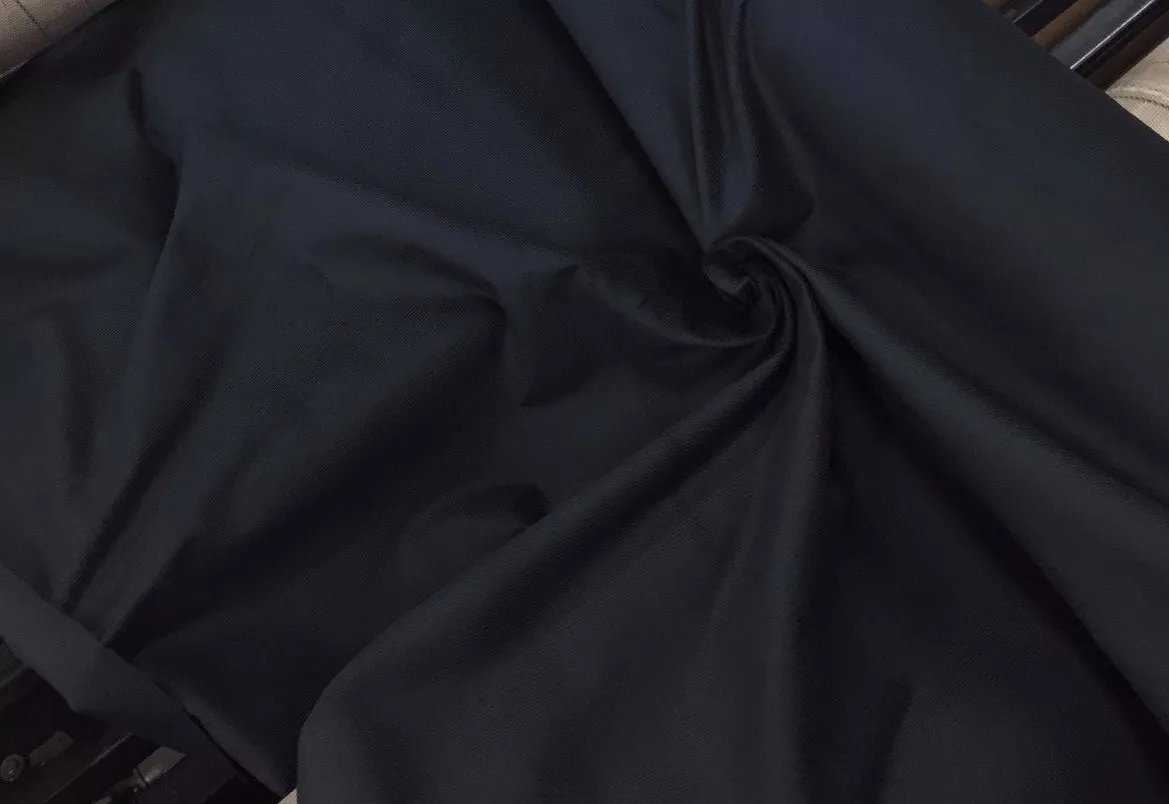
The hallmark of premium corduroy lies in its construction and fiber composition. When you see “100% cotton corduroy,” you’re getting a fabric that prioritizes natural breathability, durability, and comfort over cheaper synthetic blends.
The 100% Cotton Standard
True quality begins with fiber selection. Manufacturers use medium-to-long staple cotton varieties that create smooth, resilient threads. These fibers undergo precise weaving to form the base layer, followed by expert cutting techniques that produce the signature ridged texture.
Quality Check: Superior 100% cotton corduroy reveals itself through visual and tactile inspection. Look for uniform wales with consistent spacing and height, dense pile surfaces that resist flattening, and tight base weaves that prevent fraying at stress points. Not sure which weight is right for your project? Our corduroy weight calculator provides instant recommendations.
Manufacturing Process
Understanding how corduroy is made helps you appreciate its value:
- Base Weaving: Cotton yarns are woven into either plain or twill weave foundations
- Pile Addition: Extra “pile threads” are woven into the base fabric in regular intervals
- Cutting: Industrial cutters slice through the pile threads to create individual wales
- Brushing: The cut pile is brushed and singed to create uniform, soft ridges
- Finishing: Advanced treatments ensure color fastness and fabric stability
Benefits and Unique Properties
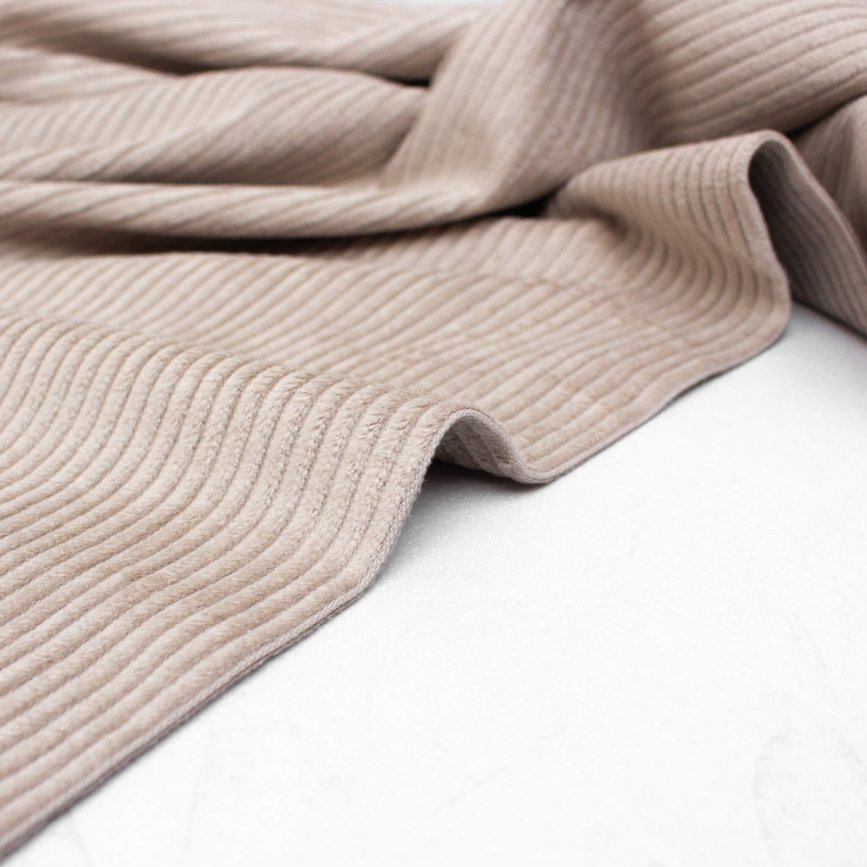
Corduroy cotton offers several advantages that explain its enduring popularity across fashion and home applications.
Is Corduroy Cotton Warm?
Yes, corduroy provides excellent insulation. The vertical wales create tiny air pockets that trap body heat effectively, making it ideal for fall and winter garments. However, the cotton base prevents overheating by allowing moisture to escape, unlike synthetic alternatives that can feel clammy.
Durability and Longevity
The ridged structure acts as natural armor against wear. Each wale distributes stress across the fabric, preventing the pilling and thinning common in smooth cotton weaves. Quality 100% cotton corduroy actually improves with age, developing a soft patina while maintaining structural integrity.
Thermal Properties
Excellent insulation for cooler weather while remaining breathable enough for transitional seasons. The textured surface creates natural warmth without bulk.
Comfort Factor
Soft to the touch with natural cotton breathability. The pile becomes softer with each wash, creating a luxurious feel that synthetic blends can’t match.
Visual Appeal
The ridged surface catches and reflects light uniquely, adding depth and dimension to both clothing and interior spaces. Available in rich, saturated colors.
Versatility
Bridges casual and formal applications. Works equally well for structured blazers, comfortable pants, and home upholstery. Adapts to various style aesthetics.
What Does Corduroy Fabric Feel Like?
Fresh corduroy has a slightly firm texture with distinct ridges you can feel with your fingertips. As it’s worn and washed, the pile softens considerably, developing what enthusiasts describe as a “velvety” feel. The cotton base provides the familiar breathability and comfort of natural fiber.
Technical Specifications & Wales Guide
Understanding wale measurements helps you choose the right corduroy for your specific needs. The “wale count” refers to the number of ridges per inch, directly impacting both appearance and application. Use our corduroy fabric weight calculator to determine the perfect weight for your specific project.
Complete Wales Classification Guide
| Wale Type | Count (per inch) | Best Applications | Thickness | Durability |
|---|---|---|---|---|
| Elephant/Jumbo | 4-6 | Upholstery, outerwear | Very thick | Maximum |
| Wide Wale | 8-10 | Pants, jackets, bags | Thick | High |
| Medium Wale | 11-13 | Shirts, casual wear | Medium | Good |
| Fine Wale | 14-16 | Blouses, lightweight jackets | Thin | Moderate |
| Needlecord/Pinwale | 18+ | Shirts, dresses, linings | Very thin | Delicate |
Weight and Width Considerations
Corduroy weight is measured in ounces per square yard, typically ranging from 8-16+ oz. Lighter weights (8-10 oz) drape well for garments, while heavier weights (14+ oz) provide structure for upholstery and outerwear.
Standard fabric widths range from 44-60 inches. Wider options reduce seaming in large projects like upholstery, while narrower widths optimize cutting layouts for garments.
Pro Tip: Match wale size to intended use. Wide wales work best for pants and furniture where durability matters. Fine wales excel in shirts and blouses where drape and softness are priorities.
Fashion Applications & Modern Styling
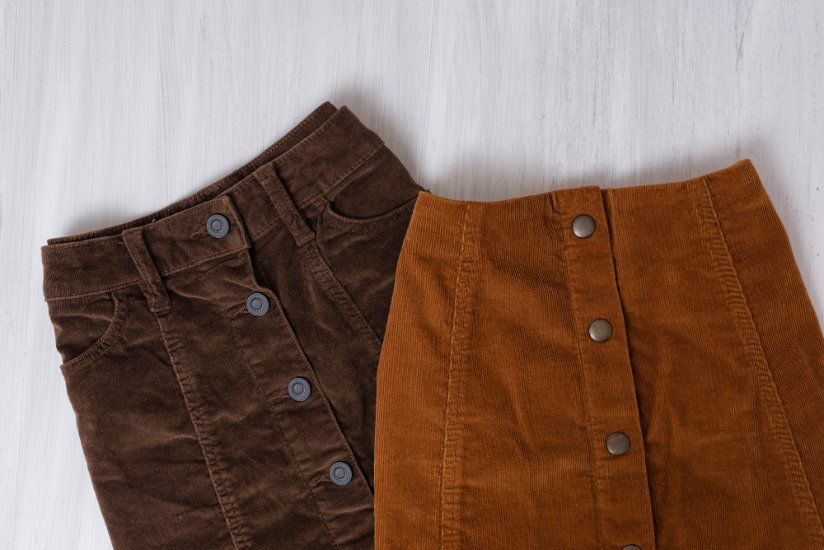
Corduroy’s versatility makes it suitable for everything from business casual to weekend wear. Understanding how to style different weights and colors maximizes its potential in your wardrobe. Take our corduroy style quiz to discover your personality-based fashion recommendations.
2025 Styling Trends
This year’s corduroy fashion emphasizes:
- Oversized Silhouettes: Relaxed blazers and wide-leg pants that prioritize comfort without sacrificing style
- Color Blocking: Rich, saturated tones like burgundy, forest green, and deep navy
- Texture Mixing: Pairing corduroy with smooth fabrics like silk or cotton poplin for contrast
- Sustainable Styling: Investment pieces designed to last decades rather than seasons
Business Casual
Fine-wale corduroy blazers pair beautifully with dress shirts and chinos. The texture adds visual interest while maintaining professionalism. Choose navy, charcoal, or deep brown for versatility.
Weekend Wear
Wide-wale pants with casual tees or flannel shirts create effortless comfort. Layer with denim jackets or cardigans for temperature control.
Evening Wear
Structured corduroy suits in rich colors make sophisticated statements. The texture catches restaurant lighting beautifully while remaining comfortable for long evenings.
Seasonal Layering
Corduroy excels in transitional weather. Use as mid-layers under wool coats or as outer layers over lightweight knits. Natural insulation properties adapt to temperature changes.
Is Corduroy Good for Summer?
While traditionally associated with cooler weather, lightweight needlecord varieties can work in summer. Choose lighter colors and fine wales for breathability. However, corduroy shines brightest in fall and winter when its insulating properties provide both warmth and style.
Find Your Perfect Corduroy Style
Use our interactive tools to discover which corduroy weight and style works best for your body type and lifestyle.
Corduroy Fabric Weight Calculator Corduroy Style QuizInnovative Home Decor Applications
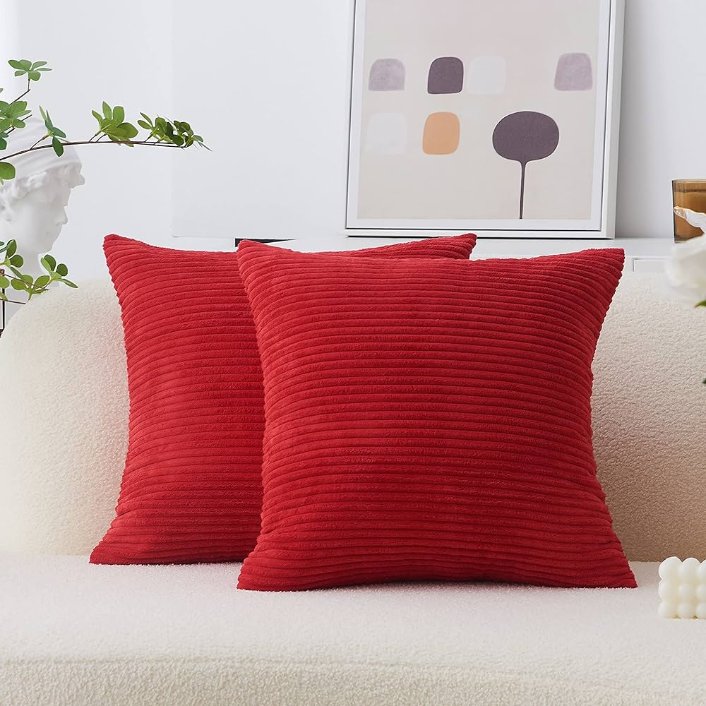
Corduroy’s renaissance extends well beyond fashion into interior design, where its texture and durability make it ideal for furniture and accent pieces.
Upholstery Excellence
Wide-wale and elephant corduroy excel in high-traffic furniture applications. The ridged structure resists abrasion while maintaining visual appeal. Modern corduroy upholstery offers:
- Durability: Withstands daily use without showing wear patterns
- Comfort: Natural cotton breathability prevents the stickiness of synthetic upholstery
- Style Flexibility: Works with both vintage and contemporary furniture designs
- Easy Maintenance: Responds well to professional cleaning methods
Accent Applications
Smaller corduroy applications add texture without overwhelming spaces:
Throw Pillows
Mix fine and wide wale varieties for layered texture. Combine neutral base colors with one or two accent tones for visual interest.
Window Treatments
Medium-wale corduroy creates beautiful drapes that filter light softly while providing insulation. Avoid direct sunlight to prevent fading.
Table Linens
Table runners and placemats in fine-wale corduroy add sophisticated texture to dining settings. Choose darker colors for practicality.
Wall Coverings
Corduroy panels create interesting wall treatments. Vary wale directions for geometric patterns that play with light and shadow.
Design Style Compatibility
Corduroy complements several design aesthetics popular in 2025:
Hygge Style: Creates cozy, comfortable environments perfect for the Danish concept of everyday contentment
Retro Revival: Essential for 1970s-inspired interiors with curved furniture and earthy color palettes
Textural Modernism: Provides organic texture that softens minimalist spaces without overwhelming clean lines
Complete Corduroy Care Guide
Proper care ensures your corduroy cotton maintains its texture, color, and durability for years. Unlike delicate fabrics, corduroy is surprisingly resilient when cared for correctly. Generate your personalized corduroy care checklist with step-by-step maintenance instructions.
Does 100% Cotton Corduroy Shrink?
Yes, like all cotton fabrics, corduroy can shrink if exposed to heat. However, proper washing techniques minimize shrinkage while maintaining the fabric’s integrity.
Can Cotton Corduroy Get Wet?
Absolutely. Cotton corduroy is machine washable and actually improves with regular cleaning. The key lies in using appropriate temperatures and drying methods.
Complete Care Instruction Flowchart
Pre-Treatment
Check care label, spot-treat stains with mild detergent
Preparation
Turn inside out, separate by color, avoid lint-producing fabrics
Washing
Cold water, gentle cycle, mild detergent, don’t overload
Drying
Air dry flat, avoid direct sunlight, low heat if machine drying
Finishing
Steam iron inside out, brush pile if flattened, store properly
- Pre-Treatment: Check care labels and spot-treat stains with mild detergent
- Turn Inside Out: Protect the wales from excessive friction during washing
- Cold Water Wash: Use gentle cycle with cold water to prevent shrinkage
- Mild Detergent: Avoid harsh chemicals and fabric softeners that can damage cotton fibers
- Gentle Agitation: Don’t overload the machine – give garments room to move freely
- Air Dry Flat: Lay garments flat on clean towels, avoiding direct sunlight
- Brush if Needed: Use a soft clothes brush to restore flattened pile after drying
Why Is Corduroy Sometimes Dry Clean Only?
Structured garments like tailored jackets may require dry cleaning to maintain their shape and interfacing. However, most casual corduroy items are machine washable. Always check individual care labels for specific instructions.
Can Corduroy Be Ironed?
Yes, but with caution. Turn garments inside out and use low heat settings. Never iron directly on the wales as this will flatten the texture permanently. Steam is often safer and more effective than direct heat.
Storage Tip: Hang structured pieces like blazers and fold casual items carefully to avoid crushing the wales. Store in cool, dry places using breathable garment bags for long-term storage.
Corduroy Care Resources
Get personalized care instructions and troubleshooting help for your specific corduroy items.
Corduroy Care Checklist Custom Care Guide GeneratorExpert Video Guide: Sewing & Working with Corduroy
Video Overview: This comprehensive guide covers corduroy terminology, pre-washing techniques, care instructions, and professional sewing tips for working with this unique napped fabric. Perfect for both beginners and experienced sewers.
Smart Shopping Guide
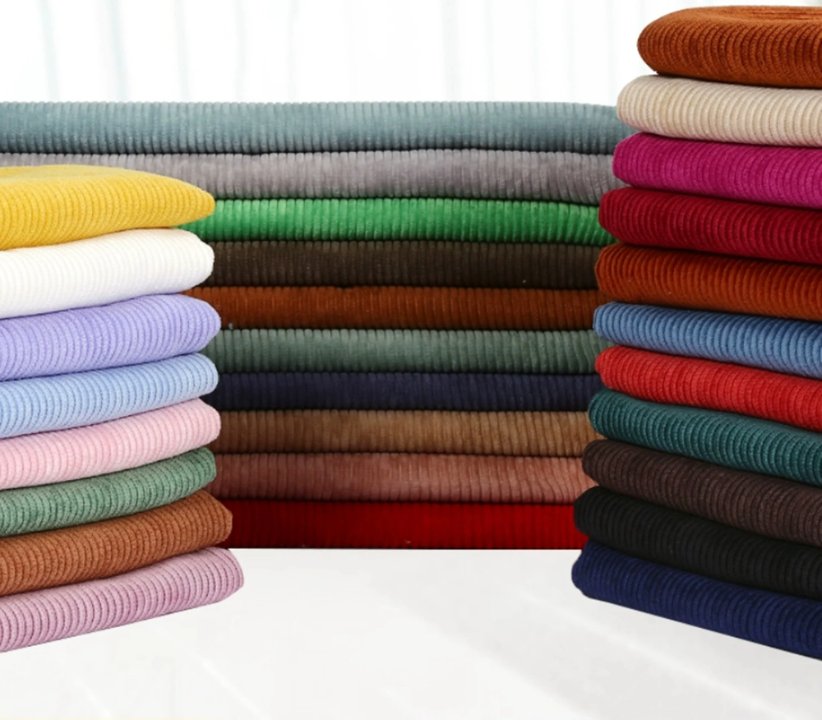
Making informed corduroy purchases requires understanding quality indicators, pricing factors, and practical considerations that affect long-term satisfaction.
How to Tell if Corduroy is High Quality
Quality assessment involves several key factors:
Fiber Content
Look for 100% cotton or high-cotton blends. Avoid corduroy with high synthetic content, which lacks breathability and softness.
Wales Uniformity
Check that ridges are evenly spaced and consistent in height. Irregular wales indicate poor manufacturing quality.
Base Fabric Density
Quality corduroy has a tight, dense base weave that prevents pulling and ensures durability. Loose weaves lead to premature wear.
Color Saturation
Rich, even colors that don’t appear faded or patchy indicate proper dyeing processes that will maintain vibrancy over time.
Is Corduroy Expensive?
Corduroy pricing varies significantly based on quality and construction. While basic varieties are affordable, premium 100% cotton corduroy with superior manufacturing commands higher prices. Consider cost-per-wear rather than upfront price – quality corduroy lasts decades.
Pricing and Value Considerations
Smart shopping strategies maximize value:
- Seasonal Timing: Shop end-of-season sales for the best prices on quality pieces
- Bulk Purchases: Many retailers offer free shipping on orders over $50-100
- Quality Investment: Premium corduroy costs more upfront but provides better value long-term
- Width Considerations: Calculate total project costs including shipping when selecting fabric widths
Corduroy Quality vs. Price Guide
| Quality Level | Price Range | Characteristics | Best For | Shopping Season |
|---|---|---|---|---|
| Basic | $8-15/yard | Cotton blends, standard wales | Casual projects, beginners | Year-round |
| Mid-Range | $15-25/yard | High cotton content, good durability | Regular wear, upholstery | End-of-season sales |
| Premium | $25-40/yard | 100% cotton, superior construction | Investment pieces, tailoring | Pre-season launch |
| Luxury | $40+/yard | Designer quality, special finishes | High-end fashion, collectors | Limited releases |
Smart Seasonal Shopping Strategy
Spring Shopping (March-May)
- Focus on lightweight needlecord varieties
- Best deals on winter-weight corduroy
- Stock up for next fall at 30-50% off
Summer Shopping (June-August)
- Limited selection but great clearance prices
- Pre-order fall collections
- Best time for fabric purchases
Fall Shopping (September-November)
- Peak selection and new arrivals
- Premium pricing but full size ranges
- Early holiday promotions begin
Winter Shopping (December-February)
- Holiday sales and year-end clearance
- Best deals on wide-wale varieties
- Limited sizes but maximum savings
Real Customer Experiences
“I picked up an M-65 jacket at a flea market in Columbus for forty bucks, and it’s become a staple. I wear it over a Henley or heavyweight tee… The extra pockets are way more useful than you’d think.” – Khris Steven, Digital Marketing Expert
“I’ve been enthusiastic about the comeback of corduroy. It has the perfect blend of vintage appeal and coziness that truly adds texture to any outfit… If you’re considering embracing the corduroy trend, I’d suggest starting with something simple like a jacket in a neutral color.” – Fashion Enthusiast Review
Source: Industry expert interviews and customer testimonials, 2024-2025
Project Planning Tools
Calculate exactly how much corduroy you need and compare costs across suppliers.
Fabric Yardage Calculator Fabric Cost Comparison ToolFrequently Asked Questions
Conclusion
Corduroy cotton stands as one of fashion’s most enduring and versatile fabrics, bridging the gap between comfort and style, casual and formal, historical and contemporary. As we’ve explored throughout this guide, its distinctive ridged texture isn’t just aesthetically pleasing but also functionally superior, providing natural insulation, durability, and a tactile experience that synthetic alternatives simply cannot match.
The fabric’s 2025 renaissance reflects broader cultural shifts toward sustainability, comfort, and authentic materials. In a world increasingly dominated by fast fashion and synthetic textiles, 100% cotton corduroy represents a return to quality craftsmanship and materials designed to last. Its biodegradable nature, combined with exceptional durability, makes it an environmentally conscious choice that doesn’t compromise on style or performance.
Key Takeaways for Smart Corduroy Selection:
- Quality Matters: Invest in 100% cotton varieties with uniform wales and dense base weaves for maximum longevity and comfort
- Match Wales to Purpose: Wide wales for durability and warmth, fine wales for drape and sophistication
- Care Extends Life: Proper washing, drying, and storage techniques can keep corduroy looking fresh for decades
- Versatility is Key: From business blazers to home upholstery, corduroy adapts to numerous applications
- Seasonal Adaptability: Choose appropriate weights and colors to enjoy corduroy year-round
Final Recommendations:
Whether you’re building a sustainable wardrobe, updating your home decor, or exploring new sewing projects, corduroy offers unmatched combination of style, comfort, and durability. Start with versatile pieces in classic colors like navy, burgundy, or deep green, which work across seasons and styling approaches.
For those new to corduroy, begin with medium-wale varieties that balance texture with wearability. As you become more comfortable with the fabric’s characteristics, experiment with different wale sizes and colors to fully appreciate its range.
Remember that quality corduroy is an investment in both style and sustainability. While premium varieties may cost more initially, their exceptional durability and timeless appeal make them cost-effective choices that improve with age. In a fashion landscape increasingly focused on conscious consumption, corduroy cotton represents the perfect intersection of environmental responsibility and enduring style.
As textile trends continue evolving, corduroy’s fundamental appeal remains constant: the perfect balance of comfort, durability, and distinctive character that makes every garment and home furnishing a pleasure to own and use.

